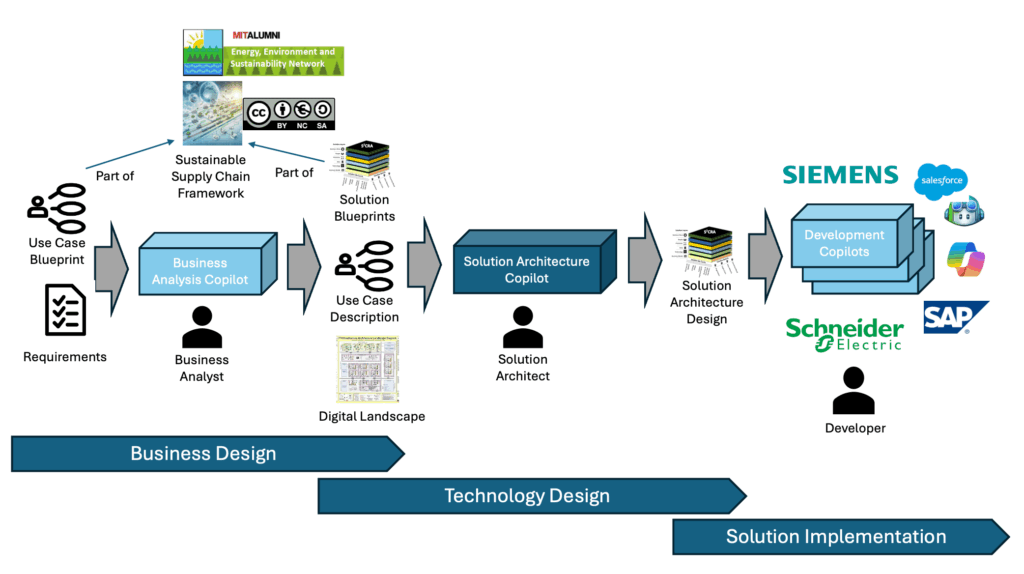
Solution Development Copilot Platform (SDCP2)
Why?
Digital Solutions are getting more complex, because the number of different technologies and products that need to exchange data is growing. As an example, for the implementation of a business solution using Digital Twins, it is not an exception to have a 2-digit number of different software products from many different vendors used, that spread across Edge, Cloud. On-Premise and On-Asset.
What?
A model-driven approach to solution development combines with genAI tools can help organizations to accelerate their solution development by up to 50% and improve the solution quality by up to 40%. These numbers are on research, for example:
Evaluating the Benefits of Model-Driven Development
Universidad San Jorge, SVIT Research Group https://www.researchgate.net/publication/341834755_Evaluating_the_Benefits_of_Model-Driven_Development_Empirical_Evaluation_Paper
The Impact of AI on Developer Productivity: Evidence from GitHub Copilot
MIT Sloan School of Management
https://arxiv.org/abs/2302.06590
Evaluating the benefits of empowering model-driven development with a machine learning classifier
Wiley
https://onlinelibrary.wiley.com/doi/10.1002/spe.3133
The Solution Development Copilot Platform integrates different reference models and (AI-powered) tools in the solution development life cycle to accelerated the development and improve the quality of digital solutions
How?
The SDCP2 combines use case blueprints and reference models in the Sustainable Supply Chain Framework that are implemented in MEGA’s HOPEX modeling platform with the Business Analysis Copilot (BAC), Solution Architecture Copilot (SAC) and Development Copilots. The BAC and SAC are genAI tools, supporting a business analyst and solution architect their work and developed by INOVIA Software. The Development Copilots are available on the market from existing software vendors like Microsoft, Schneider Electric, Anthropic, SAP and others.

The BAC leverages use case blueprints created by the MIT Alumni Energy, Environment and Sustainability Network, as well as organization-specific requirements to create an initial version of a use case description that is then finished in collaboration with the business analyst. The initial POC of the BAC was created as a capstone project at the Swinburne University of Technology in Melbourne, Australia.
The SAC uses the use case description and information about the enterprise architecture of the organization to create a first version of a solution architecture for the use case. It then supports the solution architect to finish the solution design, including a mapping of the functional solution architecture to the technical solution architecture. Once this is done the SAC has the capability to generate code and configurations in the development environments of the systems required to implement the use case, where the Development Copilots help the developers to create their part of the end-2-end solution. The SAC is currently part of a research project with Fraunhofer IOSB-AST.
The SDCP2 also uses the Solution Building Block Library of the Sustainable Supply Chain Framework, so organizations and the SAC have guidance what software products can be used to implement different parts of a use case. The Sustainable Supply Chain Framework has its genesis from a collaboration of Plattform Industrie 4.0 and the MIT Club of Germany on Sustainable Suppy Chains and Data Spaces.
The Solution Development Copilot Platform is designed in a way to support also other modeling tools that have an API allowing an interaction with architecture models in the tool and support ArchiMate, BPMN and UML as standard modeling notations.
